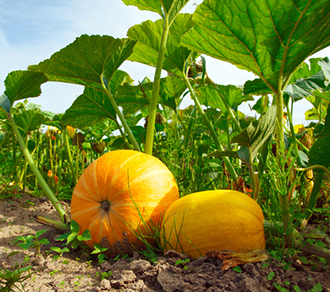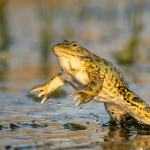
pumpkin

Plants


Stable
facts


Pumpkins probably originated in or near Mexico. They are the world’s oldest crop!
description
Squash, pumpkin, or gourd?
You know one when you see one, but what exactly is a pumpkin? They belong to a group called the “cucurbits.” Squashes and gourds are cucurbits, too. Gourds typically aren’t edible, but both pumpkins and squashes bear edible fruits. In general—although there are many exceptions—pumpkins are round, and squashes aren’t.
Is it spooky?
Does hearing the word “pumpkin” make you think of a jack-o’-lantern? If so, you’re picturing a variety called a “field pumpkin.” Field pumpkins have bright orange skin and a hard, woody, stem. They are kings of the pumpkin patch, but they are mostly grown for their looks. Other kinds of pumpkins are better tasting. Canned pumpkin (and pumpkin pie filling) is a variety called ‘Dickinson.’ And if you want to grow the world’s largest pumpkin, be sure to plant seeds of Cucurbita maxima.
In the garden
Some pumpkin plants can be bushy, but most are vines. Tendrils that look like little green springs help hold them in place. Vine or bush, pumpkins bear large, bright yellow or orange flowers that can be five inches across. Pumpkin flowers are either male or female, but both types of flowers grow on the same plant.
Not just for pie
If pumpkin pie isn’t enough of a claim to fame, pumpkin is also a respectable vegetable on its own, roasted, steamed, or boiled. It’s featured in soups and breads, and its flesh is a great source of Vitamin A and fiber. You can also munch on roasted pumpkin seeds—also known as pepitas. Even pumpkin leaves and flowers are edible!













